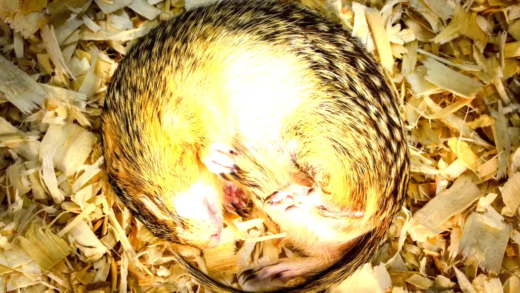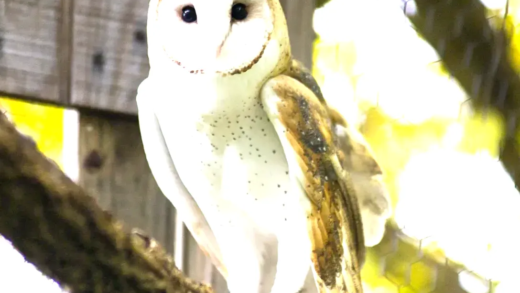The Giant Golden-Crowned Flying Fox is the largest bat species, playing crucial roles in pollination and seed dispersal while facing threats from habitat loss and hunting. They navigate using echolocation and have fascinating dietary habits.
The Giant in the Bat World: Meet the Largest Bat Species
The largest bat, known as the Giant Golden-Crowned Flying Fox, is a remarkable creature that captures the imagination. With a wingspan that can reach up to 2 meters (6.5 feet), this species stands out not just for its size but also for its unique features. Its fur is a striking golden color, which gives it a regal appearance. These bats primarily inhabit the tropical forests of the Philippines, where they play a crucial role in the ecosystem.
Wingspan Wonders: How Big Can It Get?
The wingspan of the Giant Golden-Crowned Flying Fox is one of the most impressive aspects of this bat. On average, it can stretch between 1.5 to 2 meters (approximately 5 to 6.5 feet), making it the largest bat species in the world. To put this in perspective, imagine a small child standing with arms outstretched; that’s the wingspan you’re looking at! This incredible size allows them to glide gracefully through the air, searching for food and navigating their environment.
Where Do They Roam? Habitat of the Largest Bat
The habitat of the largest bat species is primarily found in the lush, tropical forests of the Philippines, especially on the islands of Mindanao and Luzon. These bats prefer forested areas where they can roost in tall trees during the day and forage for food at night. Their choice of habitat is vital for their survival, as it provides not only shelter but also a rich source of food, primarily consisting of fruits and nectar. Unfortunately, deforestation and habitat destruction pose significant threats to their existence, leading to a decline in their population.
Dining Delights: What’s on the Menu for Large Bats?
The diet of the largest bat, the Giant Golden-Crowned Flying Fox, primarily consists of fruits and nectar. These large bats are fruit eaters, often referred to as frugivores. They play a significant role in their ecosystem by helping to pollinate flowers and disperse seeds. This means that their dining habits not only sustain them but also promote plant growth in their habitats. Some of their favorite foods include:
- Figs
- Mangoes
- Bananas
- Various tropical fruits
Interestingly, the way these bats consume their food is quite fascinating. They often hang upside down while nibbling on fruits, using their sharp teeth to make neat bites. This feeding behavior aids in seed dispersal, as they travel from tree to tree. Hence, they are not just dining; they’re also gardening!
Size Showdown: How Does the Giant Bat Stack Up?
When we compare the Giant Golden-Crowned Flying Fox to other bat species, its size is truly astounding. As the largest bat species, it dwarfs many of its relatives. For instance, the common little brown bat has a wingspan of only about 25 centimeters (10 inches). In contrast, the Giant Golden-Crowned Flying Fox can have a wingspan of up to 2 meters (6.5 feet). This size comparison highlights the remarkable diversity in bat species. Here are a few notable comparisons:
- Little Brown Bat: Wingspan of 25 cm (10 inches)
- Mexican Free-Tailed Bat: Wingspan of 35 cm (14 inches)
- Giant Golden-Crowned Flying Fox: Wingspan of 150-200 cm (59-79 inches)
This significant difference in size raises questions about adaptations and ecological roles. While smaller bats are agile and can navigate tight spaces, the Giant Golden-Crowned Flying Fox relies on its size for gliding and foraging in open areas.
Myth Busting: Debunking Large Bat Stereotypes
There are numerous myths surrounding large bats that need to be addressed. One common misconception is that the Giant Golden-Crowned Flying Fox is a dangerous predator. In reality, these bats are gentle giants, primarily consuming fruit and nectar. Another myth is that they are blind. Like many bats, they have excellent eyesight and use echolocation to navigate and find food in the dark. It’s essential to clear up these misconceptions:
- Myth: Large bats are aggressive and will attack humans.
Fact: They are harmless and shy creatures. - Myth: They are blind and rely solely on echolocation.
Fact: They have good eyesight in addition to echolocation. - Myth: Large bats only feed on blood.
Fact: They primarily eat fruits and nectar.
Understanding the truth about large bats not only helps in conservation efforts but also promotes a better appreciation of their ecological significance.
Ecosystem Heroes: The Role of Large Bats in Nature
The largest bat, the Giant Golden-Crowned Flying Fox, plays a crucial ecological role. As a frugivore, it assists in pollination and seed dispersal, which are essential for maintaining healthy ecosystems. By consuming fruits and nectar, these bats not only feed themselves but also help plants thrive. When they travel from tree to tree, they inadvertently carry seeds, promoting forest regeneration. This interaction is vital in tropical habitats, where biodiversity relies heavily on such relationships. Furthermore, large bats help control insect populations, contributing to the balance of their ecosystems.
Night Flyers: How Do They Navigate in the Dark?
The navigation techniques of the Giant Golden-Crowned Flying Fox are fascinating. These bats are equipped with excellent eyesight and utilize echolocation to find their way in the dark. They emit high-frequency sounds that bounce off objects, allowing them to create a mental map of their surroundings. This ability is crucial for locating food and avoiding obstacles while flying at night. Additionally, they rely on their keen sense of smell to identify ripe fruits from great distances. This combination of echolocation and olfactory cues enables them to thrive in their nocturnal environment.
Facing Extinction: Threats to the Largest Bat Species
Despite their ecological importance, the Giant Golden-Crowned Flying Fox faces numerous threats that jeopardize its survival. Deforestation is the most significant issue, as it destroys their natural habitat, leaving them without shelter and food sources. Urbanization and agricultural expansion further fragment their populations, making it difficult for them to find mates. Additionally, hunting and the illegal pet trade pose serious risks. Climate change also impacts their habitats, affecting food availability. Conservation efforts are crucial to protect these majestic creatures from extinction.
Interesting Facts: Fun Tidbits About the Largest Bat
Here are some intriguing facts about the Giant Golden-Crowned Flying Fox that may surprise you:
- They can weigh up to 1.2 kilograms (2.6 pounds).
- Despite their size, they are gentle and rarely interact aggressively with humans.
- These bats can live up to 30 years in the wild.
- Their fur color can vary from golden to dark brown, depending on their habitat.
- They play a vital role in maintaining the health of tropical forests, which are biodiversity hotspots.





Comments are closed.